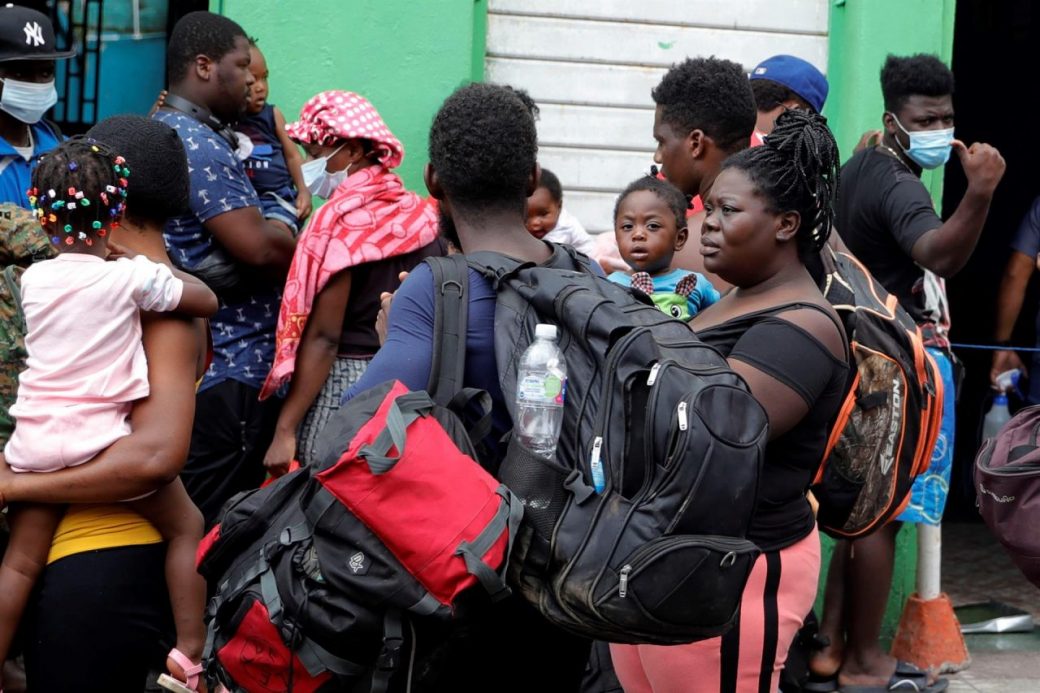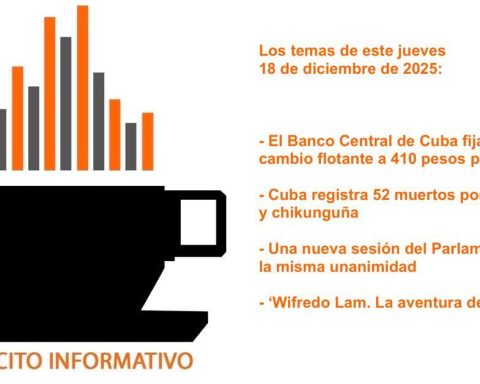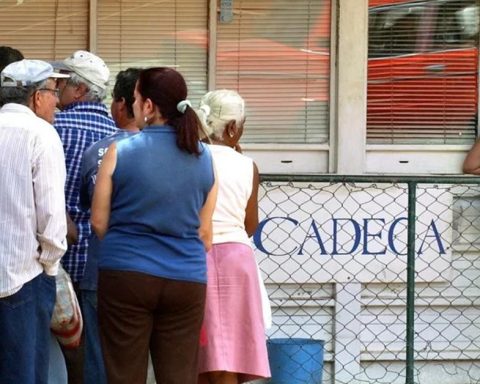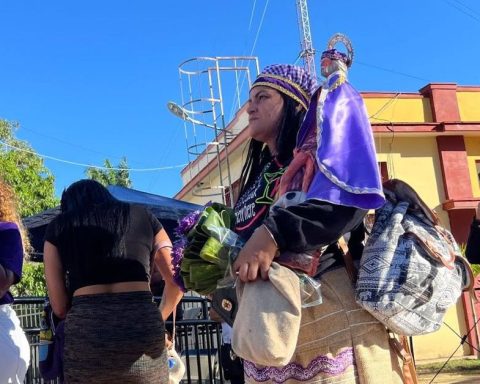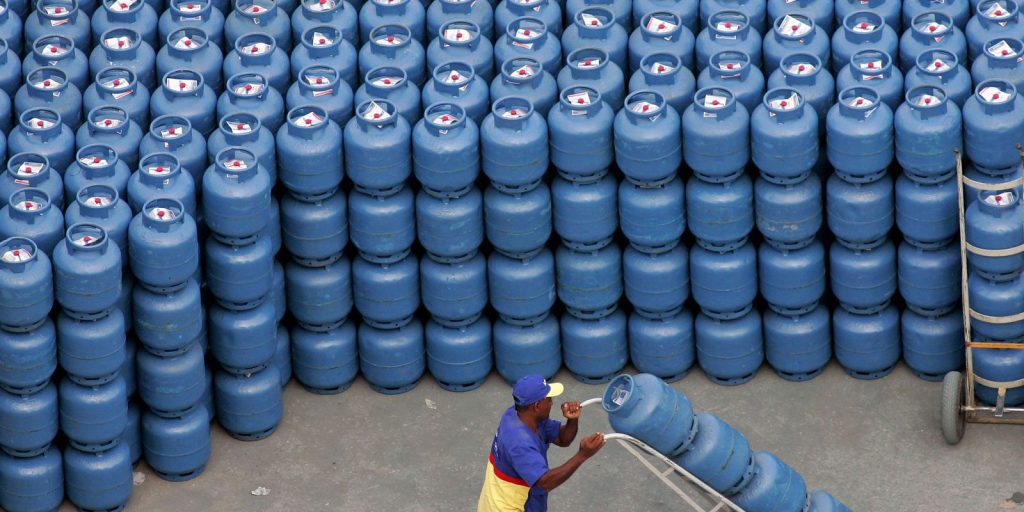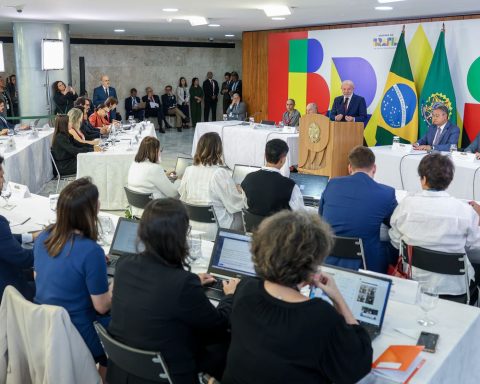This year, some 14 million Latin Americans and Caribbean people sought better luck in other countries. At least 85,000 Ecuadorians tried to reach the United States.
BOGOTÁ. The migration remains a lacerating wound in many countries of Latin America, where this year 14 million people have seen their dreams crash against a wall of discrimination, marginalization and, in some cases, even the death of those who in the midst of despair launched themselves on the adventure of looking for a more promising future. Your preferred destination, U.S, but they also sought stability in nations such as Brazil or Chile.
Unfortunately, this reality is not alien to Ecuador, whose inhabitants became in 2021 the protagonists of the phenomenon of migration, driven by poverty derived from the country’s structural economic problems and the crisis generated by the pandemic.
The main way to get to U.S, the preferred destination for Ecuadorians, is Mexico. According to data collected by the Ecuadorian Foreign Ministry, between January and October of this year, 120,000 Ecuadorians traveled to the Latin American country presumably for tourism, but only 35,000 (3 out of 10) returned to Ecuador.
The remaining 85,000 tried to reach the United States. But 43 thousand (50.5%) of them had passed through the United States immigration processing centers after being caught in the attempt to cross the border between Mexico and the United States. 17 Ecuadorians reported missing (until October) during the journey.
Due to this, Mexico reinstated the visa requirement for Ecuadorians to travel to that country from September 4. And Guatemala did the same since September 20.
Despite this, the migratory flow He did not stop, but readjusted himself. Today it is known of the unusual presence of Ecuadorians in Nicaragua, probably the new entry way to Central America on the way to U.S.
The region
Although the migratory flow in America, one of the largest in the world, dates back six decades and has so far involved the mobilization of some 40 million people, it has been more recently when the phenomenon has become a massive and media reality, happening to occupy a place on the political, economic and social agenda of the region.
“In recent years, migration in America It has begun to cease to be invisible to become a scenario similar to that of African or Syrian migrants in Europe ”, explains to Efe Germán Casas, president of Doctors Without Borders (MSF) for Latin America.
However, the differences with these areas of the planet are abysmal, because in Africa and the Middle East, migrants leave low-income countries and reach other high-income countries in Europe. On the contrary, in Latin America The journey consists of moving from one poverty scenario to another more or less similar, because only a few manage to reach U.S or Canada.
Casas, who knows closely the problem that communities in Haiti, Honduras, Mexico and Colombia are experiencing, assures that “Latin America has become an immense corridor full of migrants whose common denominator is that they are fleeing violence.”
Here migrants escape threats from the guerrillas or paramilitaries in Colombia, common crime in Venezuela, gangs in Central America or drug trafficking in Mexico, but they also leave their country behind to escape a common enemy: misery. .
According to the International Organization for Migrations (IOM), there are currently 281 million international migrants in the world, which is equivalent to 3.6% of the population. Of those, 59 million (21% of the total) are in North America and 14.8 million (5%) in Latin America and the Caribbean.
In search of the American dream
Mobility restrictions stemming from the pandemic in 2020 and much of 2021 altered these flows migratory, mainly in relation to the issuance of visas and the working conditions of Latin American workers.
This year, with the vaccination underway and the consequent economic reactivation, the flow of migrants to the United States shot up again, especially following the Labor Department’s announcement last August that 10 million employees were needed.
The declaration launched the caravans of migrants along the northern triangle of Central America (Guatemala, El Salvador and Honduras) in the direction of Mexico to, from there, take the leap and make the “American dream” come true.
The figures show this: between January and October 2021, Mexico detained 228,115 migrants and deported another 82,627, figures that had not been recorded for 15 years. In addition, 123,000 people requested refugee status in the first 11 months of 2021, well above the 40,000 requests that were routinely filed each year.
The recent resumption of the “Stay in Mexico” program, which forces foreigners to wait while a US court evaluates the asylum application, has generated serious concern because this initiative, promoted in its day by President Donald Trump, has stranded more than 70,000 people for months in the dangerous border strip.
The feeling of frustration spread among the 95,000 Nicaraguans who left their country to escape the political crisis and misery, and the 49,000 Hondurans deported from Mexico, the United States and elsewhere in Central America.
The dream was also cut short for the 9,000 people from Honduras heading to U.S that last January they entered Guatemala irregularly, where they were repressed by the police and detained.
The drama of Haitian and Venezuelan migration
“A similar pain is experienced by Haitians who, anguished by the few economic opportunities that their nation offers, have chosen to move to Brazil or Chile, where, however, they have not felt welcome,” Donna Cabrera, specialist in migration from the Pontificia Universidad Javeriana, in Colombia.
With an eye on U.S, thousands of South American migrants They travel through the region until they reach the Darien Gap, an inhospitable border enclave between Colombia and Panama where a large number of Venezuelans, Cubans, Africans, Ecuadorians and Colombians en route to the United States.
And despite the danger of an area where wild animals abound and the flooding of rivers, the boats enter the sea at midnight, crowded with people who have plenty of dreams and lack life jackets, exposed to the whims and the cruelty of human traffickers who take what little money they have with them and subject them to all kinds of abuse and humiliation. The numbers give account of this drama: Colombian authorities estimate that in the first 10 months of this year, some 90,000 people tried to cross this jungle, and at least fifty of them died.
Along with Haiti, Venezuela is the country that proportionally registers the highest number of migrants. The 2021 Living Conditions Survey of the Andrés Bello Catholic University calculates that the population “fell to 28.7 million”, because “just over four million” left the country between 2015 and 2020. The apparent economic improvement caused by de facto dollarization has not stopped this flow, although the Government assures that in 2021 many migrants They have returned, having lost their jobs in the countries where they resided, due to the pandemic.
In the absence of official statistics, the Coordination Platform for Refugees and Migrant of Venezuela (R4V), dependent on the United Nations, has registered 6,038,937 Venezuelan migrants worldwide, of which 4,992,664 are in Latin America and the Caribbean; while the Organization of American States (OAS) warns that the migration Venezuelan may reach seven million people by the beginning of 2022, thus overcoming the exodus from Syria, considered the largest in the world, with 6.7 million refugees.
Despite the efforts of the Dominican Republic, Curaçao, Colombia, Peru, Chile and USA for regularizing or granting temporary status to these people, “a pending matter for the countries of America and the regional cooperation organizations is to be able to guarantee the rights of Venezuelans, ”says specialist Donna Cabrera.
An uncomfortable truth
The migrants They are abandoned people, victims of stigmatization, traumatized because they have suffered rape, persecution, threats, extortion, robbery or kidnapping, and who sometimes lose their lives during their trip, as happened on December 9, 2021 to more than fifty from migrants Central Americans, mostly, traveling crammed into a truck that overturned on a highway in southeastern Mexico. At least two of them were Ecuadorians.
“It is sad to know that many of these people in their countries had a house, a job, a family, but now they are coming to another place and are singled out and classified as usurpers,” says Germán Casas.
Society has a hard time understanding that the crisis migratory has been constant in AmericaAnd if now it is the Central Americans, Venezuelans and Haitians, long ago it was the Mexicans, Colombians, Ecuadorians and Peruvians who tried to cross the border that separated poverty from prosperity.
“It is impossible to stop thinking that one could be in the situation of a migrant, to go from a quiet life to having to flee and leave everything to become a wanderer, without a homeland, without a family, with nothing ”, reflects the president of Doctors Without Borders. EFE
IT MAY INTEREST YOU:
Did you know that migration is a traumatic event for children?
